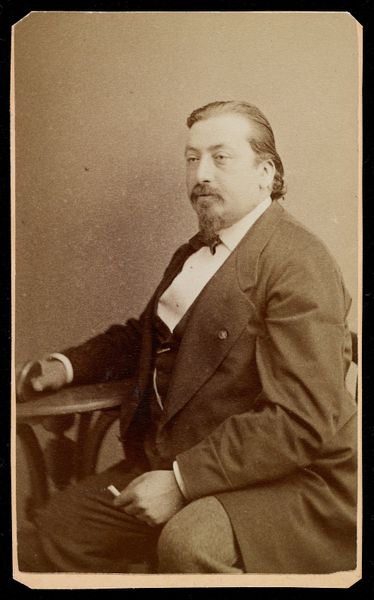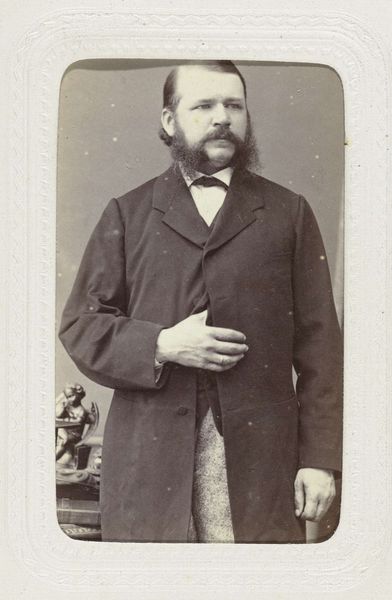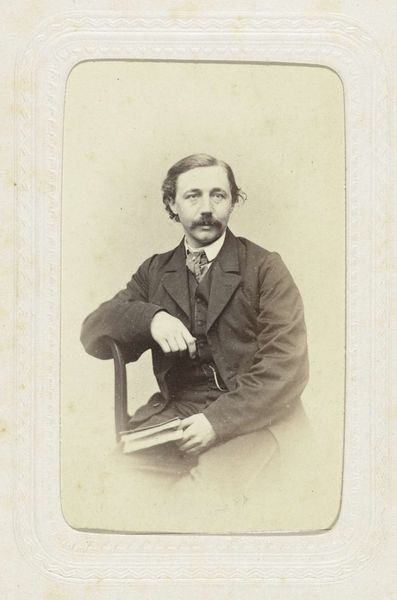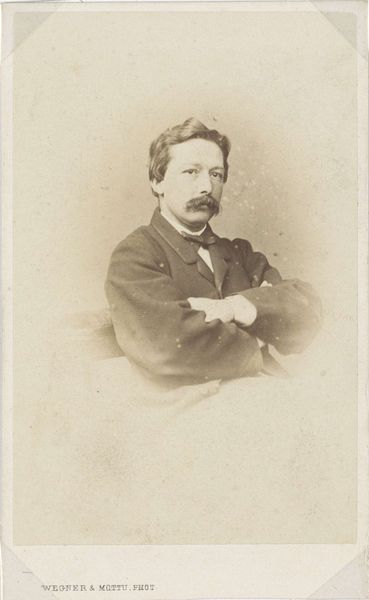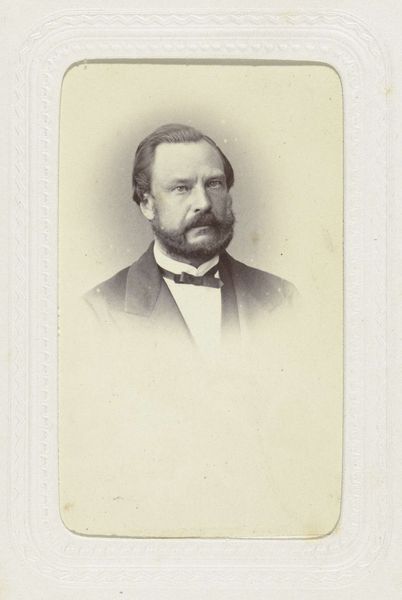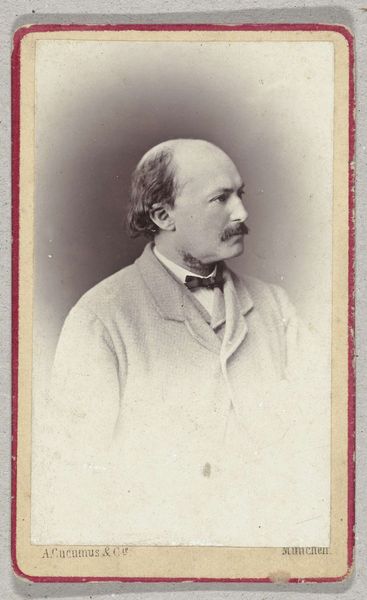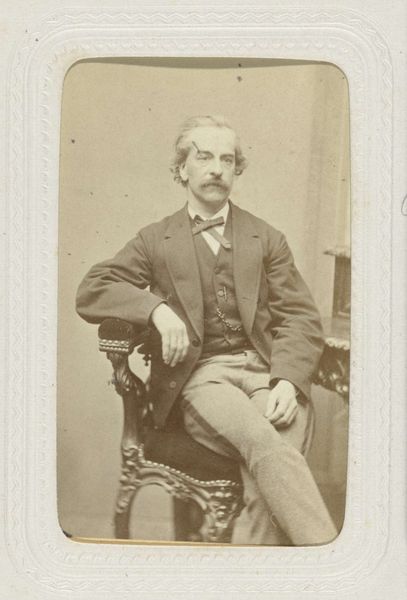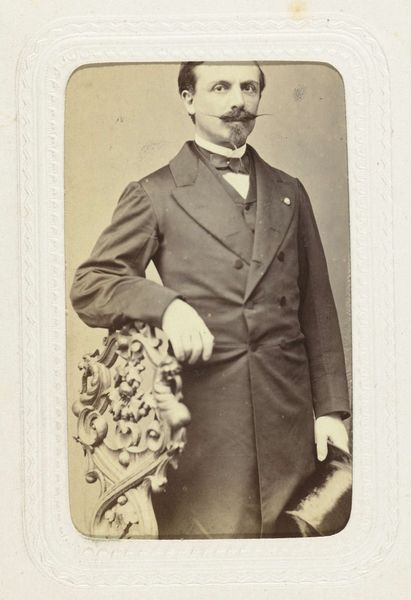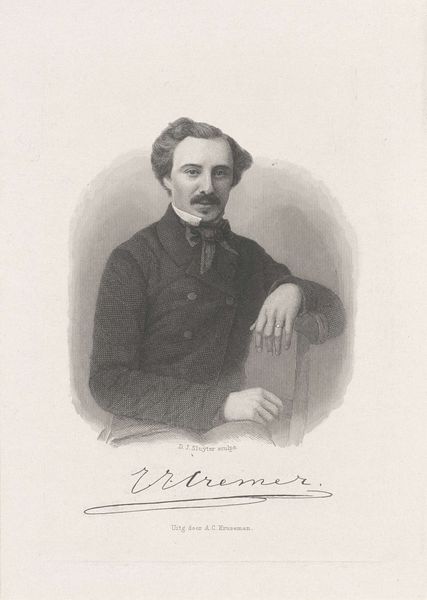
Copyright: Public domain
Curator: Immediately I'm struck by the confidence in his eyes; quite arresting! Editor: Yes, there's a steadiness about him. We're looking at a photographic portrait of Gustave Doré, dating back to 1867, created by Felix Nadar. He was quite a personality, Nadar. Curator: Indeed, he captured the great figures of his day. Beyond being a portrait, it resonates as a marker of status, even intellect. What symbols are jumping out at you? Editor: I see an elegance, certainly. The cravat's askew in a very deliberate, artful way. He's an artist through and through. The softness of the image has a painterly quality, doesn't it? It softens the very stark reality of early photography. Curator: Exactly. That soft focus isn’t accidental. It speaks to the Romantic movement, and photography's attempt to legitimize itself alongside painting. Observe also the implicit symbols of wealth: his garments and seated posture signify comfort. Editor: Absolutely, yet that comfortable posture is juxtaposed with his gaze – unflinching, thoughtful... He appears almost confrontational despite being seated. It makes me wonder about their interaction; Doré and Nadar. What was that creative process like? Did Doré participate, perhaps even dictate some of the composition? Curator: Possibly. Doré certainly was a successful artist, famed for his illustrations of Dante, the Bible… Nadar may have ceded some control. The slightly melancholic expression is, perhaps, an allusion to the artist's genius but it does strike me more that he exudes capability. It says to me I can be intense. Editor: Definitely intense, and the monochrome amplifies it. Though the color is absent, everything feels highly charged with intention and purpose, I feel pulled into this man's life. It makes me question the relationship between inner thought and its external representation. A kind of performance, perhaps. Curator: And the mustache is of that period, signaling artistic or literary leanings. In short, it serves to signal not just his individual identity, but also membership of a subculture. We all long to see ourselves somewhere on a larger cultural map. Editor: This piece is definitely much more than just a photograph of Gustave Doré; it’s about representation. It’s about how one positions oneself within the complex narratives of their time. Fascinating stuff. Curator: It certainly makes one pause, contemplate and question how society itself defines us by image alone, and what our faces have to tell about those assumptions.
Comments
No comments
Be the first to comment and join the conversation on the ultimate creative platform.



